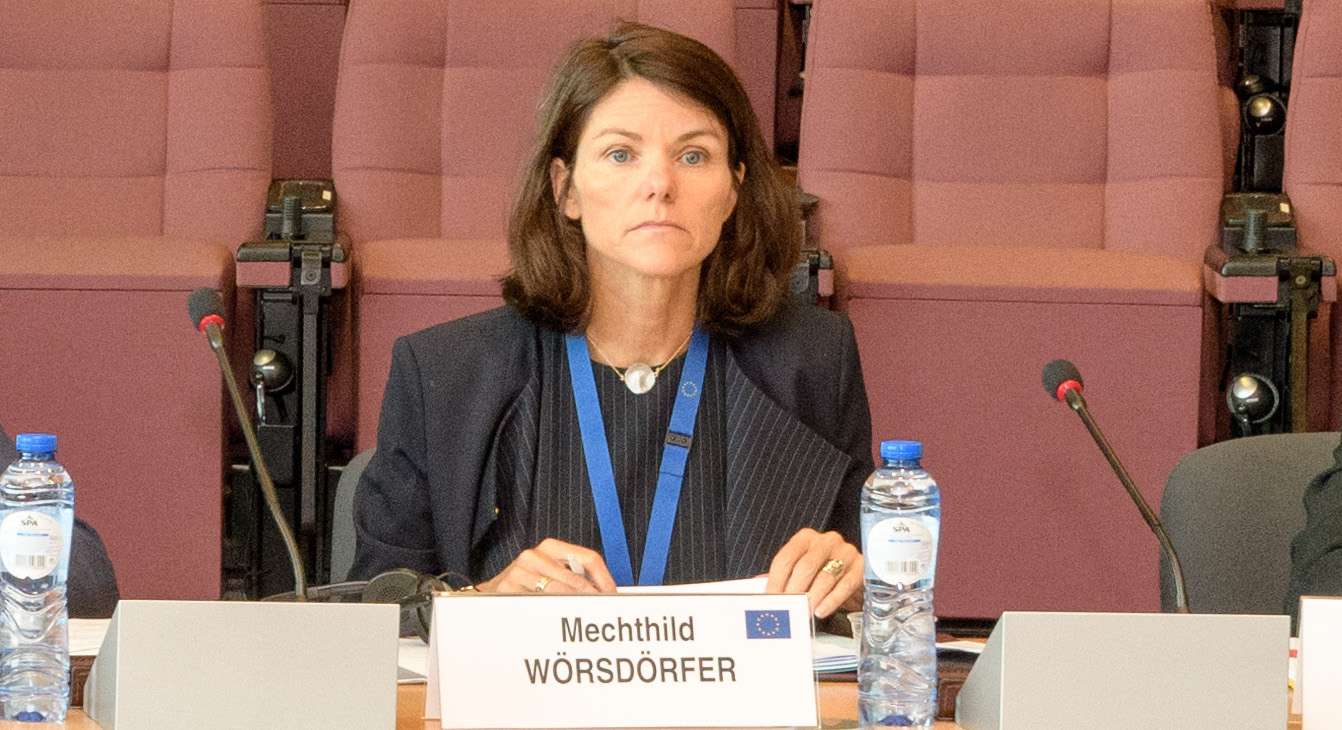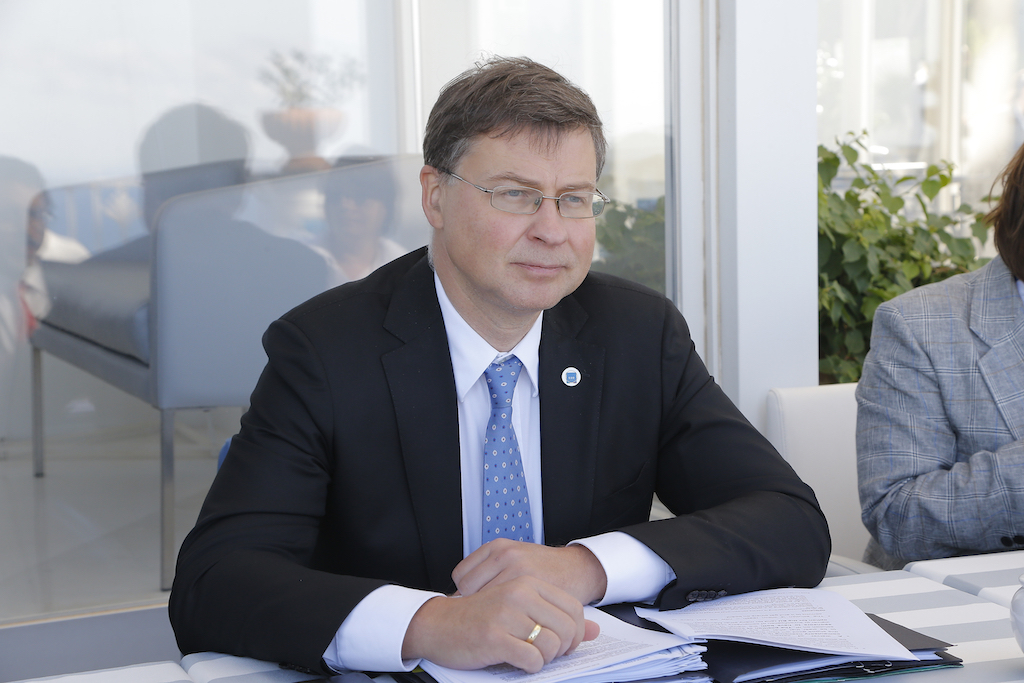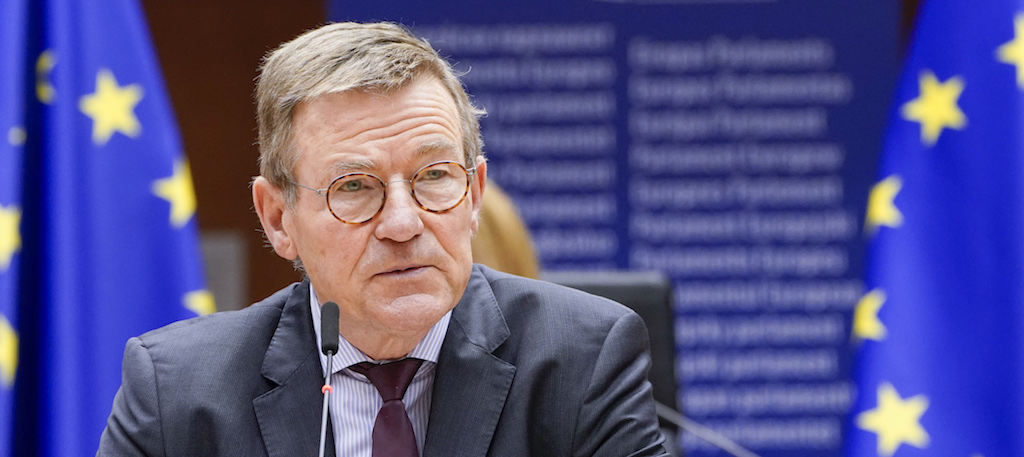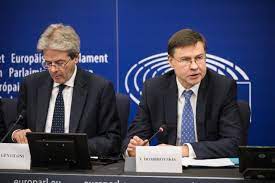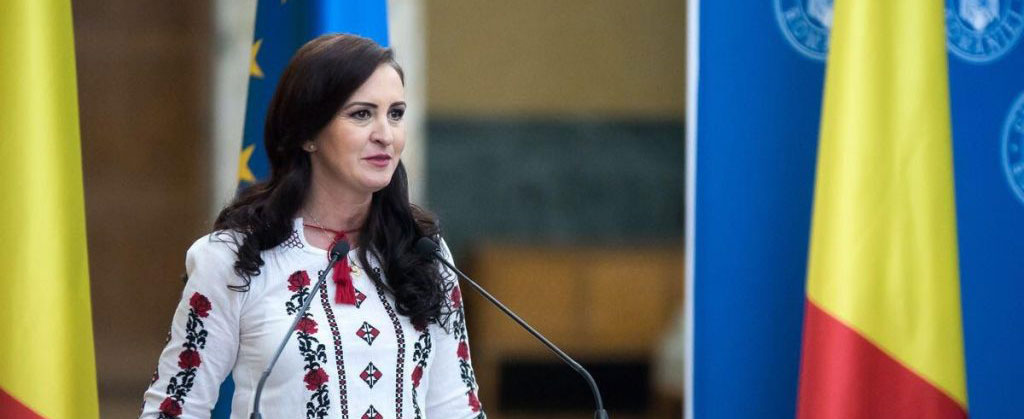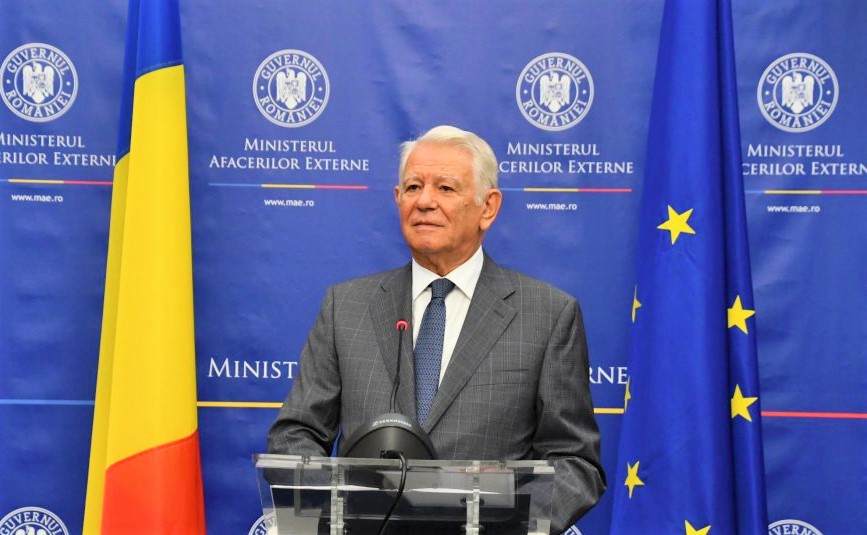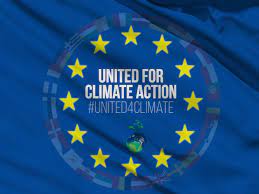
What is the State of the Energy Union report?
Each year, the State of the Energy Union report takes stock of the progress made in the implementation of the European energy and climate policies, including notably the Energy Union across its five pillars: decarbonisation, including renewables, energy efficiency, the internal energy market, energy security and research, innovation and competitiveness. In the second year of the European Green Deal’s implementation, the report provides an overview of EU energy and climate policies and their progress to attain the 2030 and 2050 EU climate objectives – against the backdrop of the emerging economic recovery after the pandemic, as well as the exceptional recent situation with regard to energy prices increase in the EU (and globally).
With the State of the Energy Union report, the Commission today also adopts:
- Climate Action Progress Report 2021
- Annex: Energy Subsidies in the EU (annex to this Communication)
- Progress on the competitiveness of clean energy technologies
- The Fuel Quality Report, and
- The Report on the functioning of the carbon market (EU Emissions Trading System)
What progress is the EU making in implementing the European Green Deal in the area of climate and energy?
The EU has adopted the European Climate Law in March 2021, making its greenhouse gas (GHG) emissions reduction target of at least 55% by 2030 and climate neutrality by 2050 legally binding. On July 14th 2021, the Commission put forward an interconnected package of proposals touching on all sectors of the economy to put Europe on the path to climate neutrality. They combine a tightening of the existing EU Emissions Trading System and a new Emissions Trading System for transport and buildings with more ambitious targets and regulatory standards for renewable energy, energy efficiency, a faster roll-out of low emission transport modes and the infrastructure and fuels to support them, an alignment of taxation policies with the European Green Deal objectives, measures to prevent carbon leakage, and tools to preserve and grow our natural carbon sinks. Further proposal are scheduled for December 2021, including the revision of the Energy Performance of Buildings Directive (EPBD), reducing methane in the energy sector and a proposal on decarbonising gas markets. The EU budget will provide significant support to implement the European Green Deal and the energy transition across the Union. In particular, the Recovery and Resilience Facility, the European Regional Development Fund (ERDF), the Cohesion Fund, the Just Transition Mechanism and Horizon Europe.
Can the clean energy transition happen in view of the efforts which need to be put into post-pandemic economic recovery?
Investing in the transformation of the energy system is investing in Europe’s future, strategic autonomy and competitiveness. It is necessary achieve climate neutrality and at the same time a response to the impacts of the COVID-19 crisis. The Recovery and Resilience Facility (RRF) is the key instrument at the heart of NextGenerationEU which will provide up to €800 billion (in current prices) to finance investments and reforms across the EU. The RRF places a special emphasis on supporting the green and digital transitions. The recovery and resilience plans presented by Member States, which lay out the investments and reforms that will be financed by the RRF, must devote at least 37% of their total expenditure on measures that support climate objectives.
What progress has the EU achieved in decarbonising its economy?
In 2020, GHG emissions reached their lowest level in 30 years, down by 31% from 1990 and 10% from 2019 levels. Even before the COVID-19 crisis, the EU had surpassed its UNFCCC target of reducing GHG emissions by 20% by 2020. In 2019 the EU had reduced its emissions by 24% compared to 1990 levels. Projections submitted by Member States in 2021 point to a 34% reduction in GHG net emissions by 2030 with existing measures and to 41% with additional measures, showing more efforts will be needed to reach the at least 55% GHG reduction target laid down in the European Climate Law. The Carbon Market Report 2021 shows that the EU Emissions Trading System (EU ETS) has contributed significantly to meeting the EU’s 2020 emissions reductions target. Since the introduction of the EU ETS in 2005, emissions in power and heat generation as well as energy-intensive industrial sectors have dropped by around 43%.
What progress is the EU making on renewables?
The latest available data from 2019 indicate that the EU as a whole, and the majority of Member States individually, were on track to achieve the 2020 renewable energy targets, thanks partly to lower prices for key technologies such as wind and solar in recent years. However, some Member States seemed to be at risk of not achieving their national binding target without making use of statistical transfers. As regards the overall EU target for 2020 (20.6%), the EU had already reached a 19.7% share of renewable energy consumption in 2019; this includes 34.1% for electricity generation, 22.1% for heating and cooling and 8.9% in the transport sector. The Commission will assess next year whether the 2020 energy efficiency targets were achieved. To promote further the use of renewable energy sources, the Commission has proposed to raise the current binding EU 2030 target for renewables from the current at least 32% to at least 40% of renewables in gross final energy consumption while proposing a complete framework for renewable energy deployment addressing all sectors of the economy. The Commission will also come forward with proposals to speed up the permitting process, one of the main bottlenecks to speed up renewable energy installation across the EU.
How is the EU progressing in the field of energy efficiency?
As part of the European Green Deal package of July 2021, the Commission proposed to raise the energy efficiency targets at EU level and to make them binding, to ensure overall reductions of 36% for final energy consumption and of 39% for primary energy consumption by 2030.The Commission will assess next year whether the 2020 energy efficiency targets were achieved. In 2019, primary energy consumption decreased for the second consecutive year. It was 1.8% lower than in 2018 although still 1.8% above the linear trajectory to reach the 2020 energy efficiency target. Final energy consumption declined in 2019 for the first time in six years, but given the accumulated gap, the yearly decline of 0.6% in 2019 was not sufficient: actual consumption was 2.3% above the linear trajectory towards the 2020 target.
Has the COVID-19 affected the EU energy security and safety in a context of increased net energy import dependency?
The resilience of the EU energy system has been demonstrated in the COVID-19 context. That said, effective preparedness to possible shocks is a continuous need at Member States and EU level. This is particularly important also in the context of increased net energy important dependency, which has reached 60.6% in 2019, the highest level over the last 30 years.
The sectorial European coordination groups (for electricity, gas and oil) played a particularly important role in 2020 and 2021, in monitoring security of supply, e.g. by addressing the impact of delays in the maintenance of power plants due to COVID-19 related measures and discussing possible reactions to extreme weather events. In the electricity sector, the first set of national risk-preparedness plans is being prepared under the Risk Preparedness Regulation.
Regarding the latest security of supply rules for gas, all but two Member States have put in place national plans to prevent or mitigate the impact of gas supply disruptions. The Commission plans a revision of the Gas Security of Supply Regulation in December 2021 adapting the rules to renewable and low carbon gases, incorporating new risks and reinforcing solidarity mechanism.
Continued improvements in electricity and gas interconnectivity have also enhanced regional cooperation and reinforced the security of supply at EU, Member States and regional level.
What progress is the EU making on the internal energy market?
In recent years, the EU has made good progress in strengthening the internal electricity and gas markets, although work is required to ensure that the markets are further integrated. The transposition of the Electricity Directive into national law has created new opportunities for companies and consumers to participate in electricity markets, for example by adjusting their demand to help relieve congestion in the grid or to balance demand and supply.
At the same time, significant progress has been made in harmonising national rules on energy trading and system operation. More than 98.6% of EU electricity consumption is coupled.
Traded volumes on natural gas hubs rose to an all-time high in 2019. This trend continued into 2020 with the COVID-19 crisis further driving the trading activity and demand for gas. Accomplishing market coupling in all timeframes across internal borders, including close to real-time balancing, would generate additional welfare benefits of more than €1.5 billion per year and reduce the need for backup fossil fuel power plants, thus saving significant GHG emissions. Delayed or incomplete implementation of theexisting acquis, including network codes, appears to be a barrier to wholesale market improvements.
What progress is being made on reducing energy subsidies? When will subsidies for fossil fuels be phased out in the EU?
Total energy subsidies in the EU amounted to €176 billion in 2019. Phasing out of coal from electricity generation has been incentivised by plant closure subsidies in many Member States. Renewable energy received a total of €78 billion in subsidies, up by 8% since 2015. Energy efficiency subsidies continued to grow, to €16 billion in 2019 and €17 billion in 2020, up by almost 50% since 2015. While fossil fuel subsidies fell slightly in 2020, down to €52 billion from €56 billion in 2019, this was due to falling consumption amid the COVID-19-related restrictions.
Fossil fuel subsidies increased in 11 Member States since 2015. Without Member States action, fossil fuel subsidies are likely to rebound as economic activity picks up. A step to phase out fossil fuel subsidies is the implementing act for the reporting of the progress of the National Energy and Climate Plans that the Commission intends to adopt in 2022, which will ensure more uniform reporting practices on the phasing out of energy subsidies, in particular for fossil fuels, across Member States.
What progresses has the EU achieved in the field of competitiveness?
The EU is well-placed in terms of global market shares in certain value chain segments of clean energy technologies, but increased investments in R&I and further efforts in technology transfer would ensure the EU seizes the opportunity of the energy transition to reinforce its competitiveness in the clean energy sector. The EU is the global leader in the wind sector, but competition remains fierce. In solar PV, the EU has a comparably small market share in cell and module manufacturing. However, it maintains a cutting edge position in other parts of the value chain, including research and development. EU’s heat pump, renewable fuels, smart grids, batteries and renewable hydrogen industries are well placed to benefit from the growing future demand stemming from the policy driven expansion of relevant markets. The second competitiveness progress report shows that the EU remains at the forefront of clean energy research. At global level, it has a greater share of ‘green’ inventions in climate change mitigation technologies than other major economies. Nevertheless, the EU’s rate of public investment in clean energy technologies needed for decarbonisation is the lowest of the major economies.
What progress has the EU achieved in the field of energy and climate diplomacy?
The EU’s share in global GHG emissions is only 8%. International cooperation in settings such as the UNFCCC, the UN High Level Dialogue on Energy, the G20, and the Energy Community, is therefore indispensable for effective climate action and for seizing the full GHG emission reduction potential. The EU and its Member States make a substantial contribution to meeting the ‘USD 100 billion per year’ goal to support climate action in developing countries. They currently provide around one third of all international public climate finance, with a substantial part dedicated to climate adaptation.
Throughout 2021, the EU has been leading the discussion on the energy transition also in multilateral fora such as the UN High Level dialogue. The EU cooperates closely with the G7 and G20 towards achieving net zero GHG emissions by 2050 and phasing out international finance for unabated coal energy production and subsidies. EU bilateral and regional energy cooperation with international partners continues to focus on systematic support for the transition to low-emission and climate-resilient economies and to ensure energy security and competitiveness. The revival of EU-US energy cooperation and the EU-Japan Green Alliance of May 2021 are examples of its approach. The Commission is currently working on an EU strategy on external energy engagement to make concrete suggestion for the efficient follow-up of the climate and energy diplomacy.
What progress have Member States made in reducing the greenhouse gas intensity of road transport fuels?
Based on the 2019 reporting data, the average GHG intensity of the fuels and energy supplied in the EU had fallen by 4.3% compared to the 2010 baseline. The year-on-year progress achieved compared to 2018 was limited to a 0.6 percentage point decrease. Progress varies greatly across Member States, and almost all need to act swiftly to meet the target set out under the Fuel Quality Directive to reduce the GHG intensity of transport fuels by a minimum of 6% by 2020 compared to 2010.
What was achieved in phase 3 (2013-20) of the ETS?
By the end of phase 3, emissions in the power and heat generation as well as energy-intensive industrial sectors, covered by the EU ETS, have fallen by around 43% compared to 2005.
Phase 3 was marked by a major revision of the EU ETS, concluded in 2018 and implemented into legislation since. The changes agreed have made the system more robust and reinforced the EU ETS for phase 4.
As of 2021, the cap on emissions is reduced annually at a rate of 2.2%. This applies to both stationary installations and aircraft operators.
The Market Stability Reserve, operational as of 2019, addresses the historical surplus of allowances built up in the EU ETS, while responding to the demand shock caused by the pandemic-driven economic downturn. It does so by adjusting auction volumes and invalidating allowances according to pre-defined thresholds aimed at fostering market balance.
Free allocation to industry, distributed to protect against the risk of carbon leakage, is based on sectoral benchmarks, which aids accuracy and reflects technological progress.
Finally, the EU ETS supports low-carbon innovation and energy transformation in lower-income Member States by monetising allowances for the Innovation Fund and the Modernisation Fund, respectively. Furthermore, the EU ETS raises auctioning revenues for the Member States. In 2020, these reached €14.4 billion and 76% were used or planned to be used for energy and climate related purposes.
These changes have increased stakeholders confidence in the EU ETS. The carbon price signal has increased, recycling important revenues to Member States, while emissions from stationary installations in the EU ETS have been on a downward trend even from before the pandemic due to coal-to-gas switching and deployment of renewables. The carbon price signal is also now factored into investment appraisal.





